As the name Polar Bear suggests that they live in the polar region, however, they are only found in the north pole. Now you might wonder why they are found in the north pole and how they even survive in the coldest climate condition. We have gathered complete information on Where Do Polar Bears Live that will give you a complete overview of the Polar Bear Habitat. In addition to this you are also going to learn the exact locations where they are found, a complete description of its habitat, whether they live in groups, the climate, their historical habitat, other animals that are found in its habitat, why they live in such a habitat, their geographic range, effects of its habitat loss due to climate change, their adaptation that allows them to live in such habitat and much other interesting information about the polar bear habitat.
Where Do Polar Bears Live
- The simple answer to this question is that Polar Bears live in the north pole also known as the arctic region.
- Polar bears are known to inhabit cold places. That is why they are found in countries that surround the Arctic Circle.
- Some of these countries are:
- Russia
- Norway
- Canada
- Greenland
- and the United States (Alaska).
- They prefer a cold climate because they are physically adapted to survive in it.

1. What Is A Polar Bears Habitat – What Habitat Do Polar Bears Live In
- The terrain that polar bears mainly inhabit is sea ice. That is where they live, breed, and prey on seals.
- The reason why they live here is that their bodies are adapted to withstand such chilling temperatures, and they have lived here for centuries.
- The Arctic is also rich in seals, which are the natural prey of polar bears.
- However, sea ice is decreasing due to global warming, so they are beginning to spend four to six months of the year on land.
2. Polar Bear Habitat Description
- Polar bears thrive on the brink of ice.
- This is where sea currents and wind meet, so ice forms and melts over and over.
- This melting and refreezing of ice create open spaces in the shelf of ice, which acts as holes for seals to emerge from to breathe.
- Polar bears hunt for seals beside these breathing holes.
- These bears also have blubber and thick coats of fur to tolerate the harsh climate.
- This explains why they live on sea ice and stay there all day. It fulfills all their food requirements and has the perfect climate for them to survive in.
- However, if it gets too cold, they might seek refuge in a den.
3. Where Do Polar Bears Live In The World – What Region Do Polar Bears Live In
- The only part of the world where polar bears live is in the Arctic.
- Their physical characteristics are perfect for the low temperatures of that region.
- They can be found in wild areas of countries like Norway, Russia, Greenland, and Canada.
4. Do Polar Bears Live In The Arctic – Where Do Polar Bears Live In The Arctic
- Within the Arctic, polar bears can be found in Greenland, Alaska, Russia, Norway and the northern areas of Canada.
- In Canada, they reside between the Alaskan border and Labrador, and between James Bay and northern Ellesmere Island.
- In Alaska, they live in the northern regions, staying away from human settlements.
- They inhabit the entire northern coast of Russia that has pack ice.
- The parts of Norway that they live in are the islands that are under Norwegian territory, such as Svalbard.
5. Why Do Polar Bears Live In The Arctic – How Do Polar Bears Live In The Arctic
- Centuries ago, brown bears living in the Arctic developed into polar bears.
- These polar bears are not found anywhere else because the Arctic is the perfect home for them, and they did not feel the need to travel anywhere else.
- Even in such cold temperatures, polar bears can survive because of their physical features.
- Due to their thick coats of fur and blubber, they are also adapted very well to the conditions of the Arctic.
- Their layers of fur and blubber are both very thick, so their bodies can stay warm.
- Their fur is white, so they can hunt prey more easily by blending into the surroundings of ice and snow.
- They even have fur on their large paws, so that they can walk on snow without slipping.
6. What Environment Do Polar Bears Live In
- The best environment for polar bears to survive in is sea ice, where they find all the food they need and the climate is also favourable.
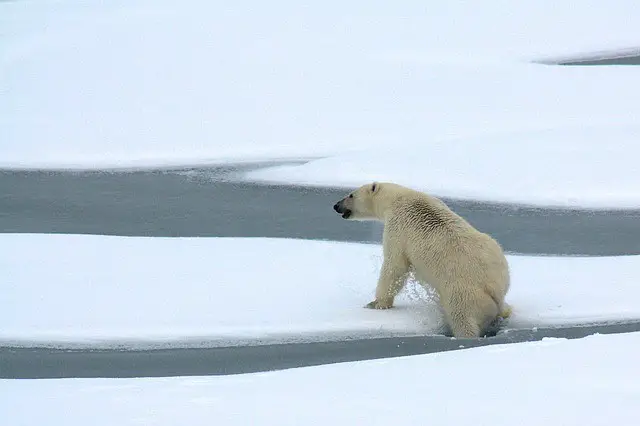
7. What Climate Do Polar Bears Live In
- The best climate for polar bears to survive in is the Arctic climate.
- The winter temperature is around minus 34 degrees Celsius (minus 29 degrees Fahrenheit), but can go as low as minus 69 degrees Celsius (minus 92 degrees Fahrenheit).
- In summer, the temperature is usually from minus 10 to 10 degrees Celsius (14 to 50 degrees Fahrenheit).
8. What Countries Do Polar Bears Live In
- The five countries known as ‘polar bear nations’ are
- Russia
- Denmark (Greenland)
- the United States (Alaska)
- Norway
- and Canada.
9. Where Do Most Polar Bears Live
- More than two-thirds of the world’s polar bears live in Canada.
- A large number of these bears is found in the city of Churchill, off the west coast of Hudson Bay.
- In Canada, they can also be found from Labrador to the Alaskan border, and from northern Ellesmere Island to James Bay.
- These bears also inhabit Russia, Greenland, Alaska, and some of the northern islands under the territory of Norway.
10. Where Did Polar Bear Live
- About 150,000 years ago, brown bears living in the Arctic gradually evolved into polar bears.
- Their fur became thicker and blubber became deposited under the skin to keep them warm and enable them to stay without food for a long time.
- There was no rich vegetation in the Arctic, so they had to survive on seals.
- That is where the polar bears remained because they did not feel the need to travel elsewhere. Thus, these animals are only present in the Arctic.
11. What Animals Live With Polar Bears
- Other animals also live in the Arctic with polar bears. Some of them are:
- Wolves: Polar bears encounter them while prowling the tundra, and can easily eat them up. Their strong jaws are capable of breaking a wolf’s skull.
- Walruses: They are also found on sea ice, and while polar bears usually feed on their carcasses, young walruses can also be killed by these bears.
- Seals: Some types of seals found in the Arctic are hooded seals, ringed seals, harp seals and bearded seals. Polar bears eat them all, as seals are their main prey.
- Whales: Polar bears prefer the carcasses of whales, but if need be, they can also kill beluga whales. Killer whales, however, are even fiercer predators, and have been recorded eating polar bears swimming in the sea.
- Foxes: Polar bears even eat Arctic foxes.
- Reindeer: If these bears do not find their primary prey (seals and wolves), they hunt down and feed on reindeer.
- In fact, polar bears are so high up on the food chain that their only known predator is the killer whale.
12. What Ecosystem Do Polar Bears Live In – What Biome Do Polar Bears Live In
- Polar bears can only be found in the polar ecosystem of the Arctic.
- Polar bears are found in the tundra biome which is the coldest of all biomes.
- The tundra biome is quite big and is about one fifth of the whole land on earth.
- Tundra means a treeless plain. It is located in the Arctic circle, which is hypothetical circle surrounding the north pole.
13. Where Do Polar Bears Live In The Summer
- Polar bears inhabit sea ice all year round, as the climate is satisfactory in the summer as well as winter.

14. Do Polar Bears Need To Live In The Cold – Why Do Polar Bears Live In Cold Places
- Polar bears have some physical features (such as two coats of fur and blubber under the skin) which help them sustain the cold, so low temperatures are perfect for them.
- Ever since brown bears evolved into polar bears, they did not leave the Arctic.
- Also, they have two thick coats of fur and a four-inch layer of fat under the skin, so they are adapted to live in cold places.
15. What Ocean Do Polar Bears Live In
- Polar bears dwell on the ice on the Arctic Ocean.
16. Do Polar Bears Live In Alaska – Where Do Polar Bears Live In Alaska
- Polar bears live in Alaska, along with the other Arctic regions.
- They mainly inhabit the northern region of Alaska, often avoiding the places which humans occupy.
- During the winter, polar bears in Alaska can be present in the northern regions above St. Lawrence Island, and sometimes they also travel to St. Matthew Island and the Kuskokwim Delta.
- In the summer, most of them live on the brink of the pack ice in the Arctic Ocean and the Chukchi Sea.
17. Do Polar Bears Live In Canada – Where Do Polar Bears Live In Canada
- Polar bears occupy all the wild regions of the Arctic, and that includes some parts of Canada.
- Polar bears in Canada live in the areas from Labrador to the Alaskan border and from James Bay to northern Ellesmere Island.
- There are also many dens built by polar bears in Churchill, on the western coast of Hudson Bay.
18. Polar Bear Habitat Loss
- The poles have the highest albedo (ability to reflect rays from the sun back into space), which means that they are warming up faster than the rest of the world.
- This increase in temperature is melting sea ice at the rapid rate of 4.6% per decade, which is the natural habitat of polar bears.
- That is the biggest reason why polar bears are vulnerable to extinction; habitat loss.
- This means that bears have to spend the summer on land, where they have trouble keeping cool, because of their thick fur.
- On land, they sometimes enter human settlements, where people kill them.
- The land also does not have enough seals or fish, so their diet is also compromised.
- Along with that, exploration of gas and oil in the Arctic is also a potential threat to their survival, as oil spills can be fatal for the entire ecosystem.
- Sometimes, they are also illegally hunted.
19. Polar Bear Habitat Facts
- Polar bears do not always stay in the same place. They will travel wherever they can find enough seals to hunt down and the sea ice is of good quality.
- Therefore, they travel a lot because the sea ice is always changing.
- Polar bears are mostly solitary, and only form groups to eat together when they find a lot of food.
- Cubs also live with their mother bears until they are old enough to be on their own.
- About 60% of the world’s polar bears live in Canada.
- The poles have the highest albedo, meaning that they are warming up faster than the rest of the world. That is why sea ice is melting so rapidly, causing polar bears to lose their habitat.
20. Polar Bear Habitat Map – Where Do Polar Bears Live Map – Polar Bear Range Map
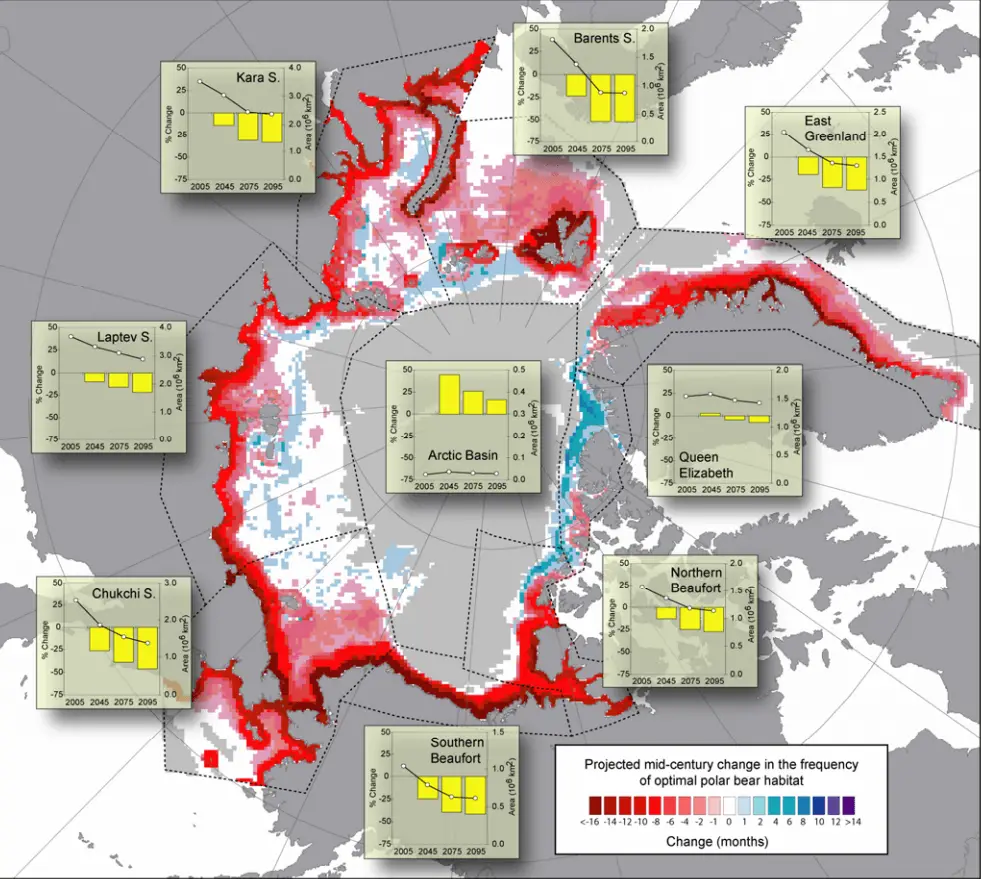
21. Polar Bear Geographic Range – Polar Bear Range
- Unlike other carnivorous mammals, polar bears do not have their own territories.
- Their range depends on the type of ice and the number of seals available to prey on.
- Naturally, pack ice on the sea is constantly changing, which means that polar bears migrate extensively all year.
- They do not prefer to reside in places above latitude 88 degrees north, but polar bear tracks have been found even at the North Pole.
- During the harsh winter, when sea ice becomes even heavier, they trek south to Norway, Newfoundland and Labrador.
- When cubs are old enough, they leave their mothers and travel more than 1,000 kilometres.
- Polar bears living in places with abundant food have a shorter range than those living in areas with scarce fish and seal.
- The furthest any satellite-tracked polar bear has ever travelled is 4,800 kilometres.
Do you know: What do Polar Bears Eat?
22. Polar Bear Habitat And Adaptation – How Do Polar Bears Survive In Their Habitat
- Polar bears live on sea ice, and are well-adapted to this environment.
- Apart from having two thick layers of fur, they also have some fur on their paws to keep them warm as they walk on ice and increase friction so that they don’t slip.
- Also, their white fur acts as camouflage, helping them hide from predators and hunt down their prey.
- Their paws are large, providing more stability to their bulky bodies.
- Their fur appears white and helps them blend in with the environment of ice and snow, making it easier for them to catch prey.
- They also have a four-inch-thick layer of fat under their skin, which not only insulates heat in their bodies, but also provides them with energy at times when they cannot find food.
23. How Many Polar Bears Live In The Arctic – Polar Bear Population
- It is estimated that about 25,000 polar bears are left in the Arctic.
25. Do Polar Bears Live In Groups
- Polar bears are mostly alone, and only when they find enough food do they form groups and eat together. But these groups do not last long.
- Cubs also stay with their mothers until they are old enough to be solitary.
26. Interesting Facts About Polar Bears Habitat
- Although polar bears can run, they prefer to sit patiently next to a breathing hole for seals and wait for their prey instead of chasing it.
- They are capable of swimming in the sea for hours, to get from one piece of ice to another.
- Along with climate change, another great threat to their habitat is the exploration of oil and gas in the Arctic.
- The total population of polar bears is divided into 19 subpopulations.


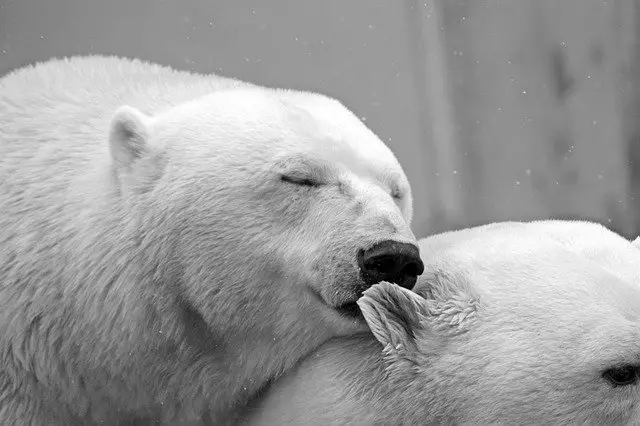
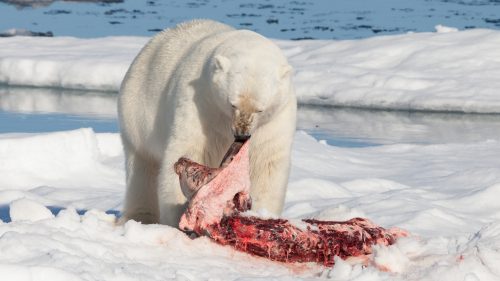

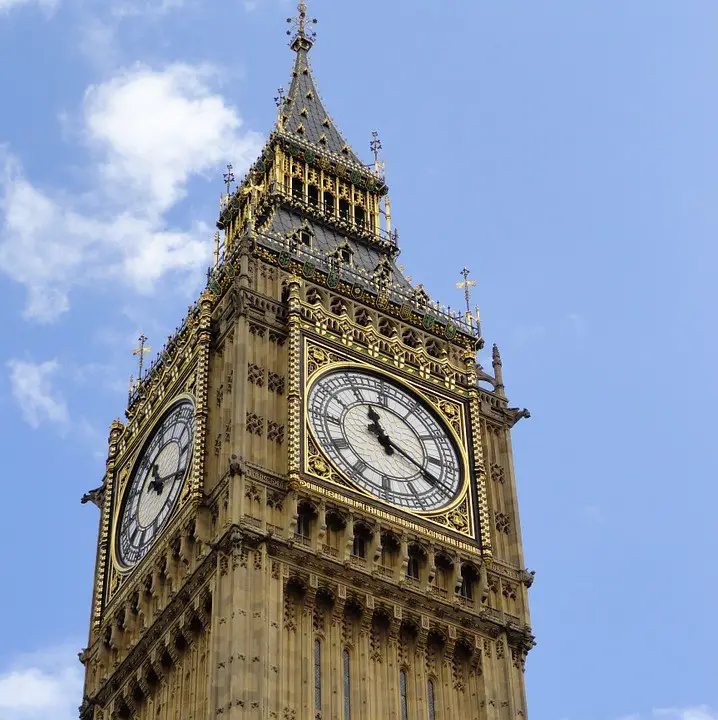








shrek